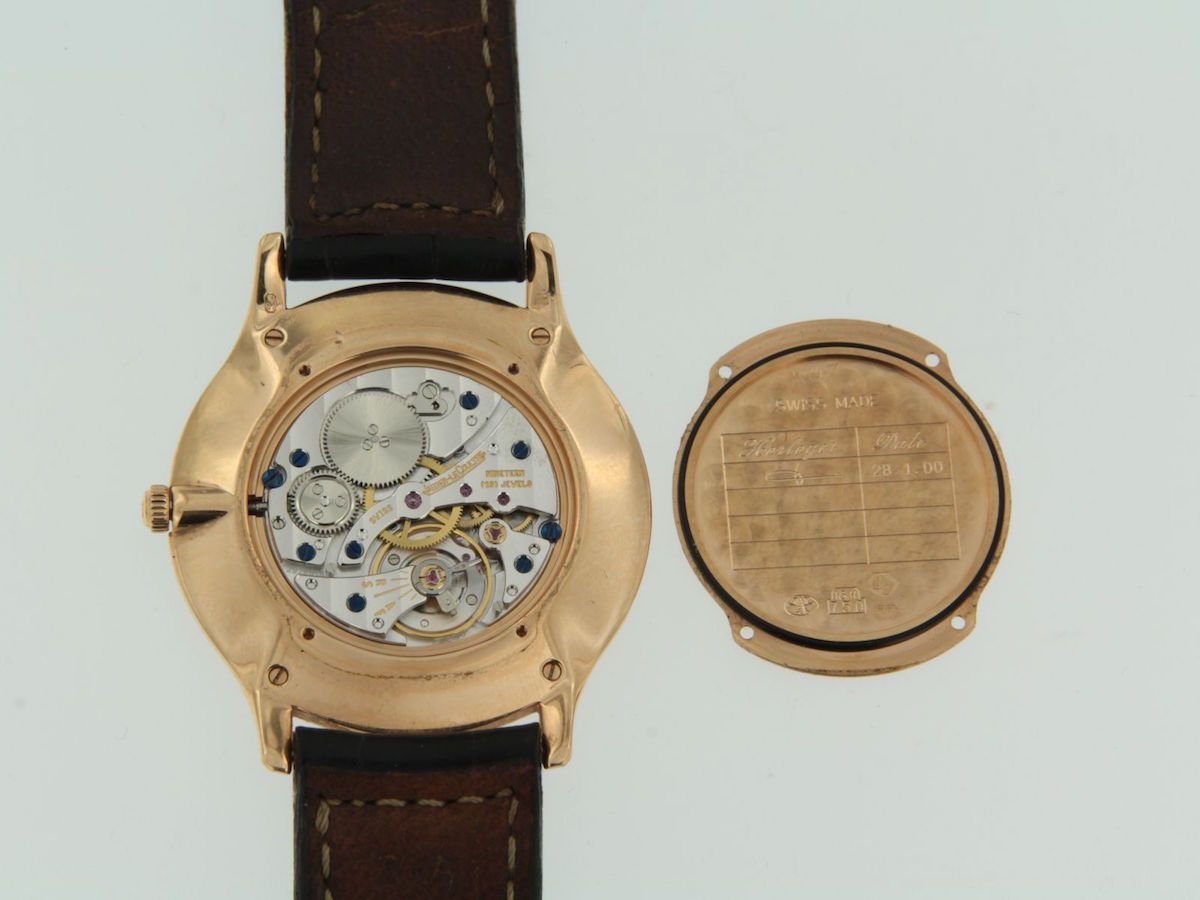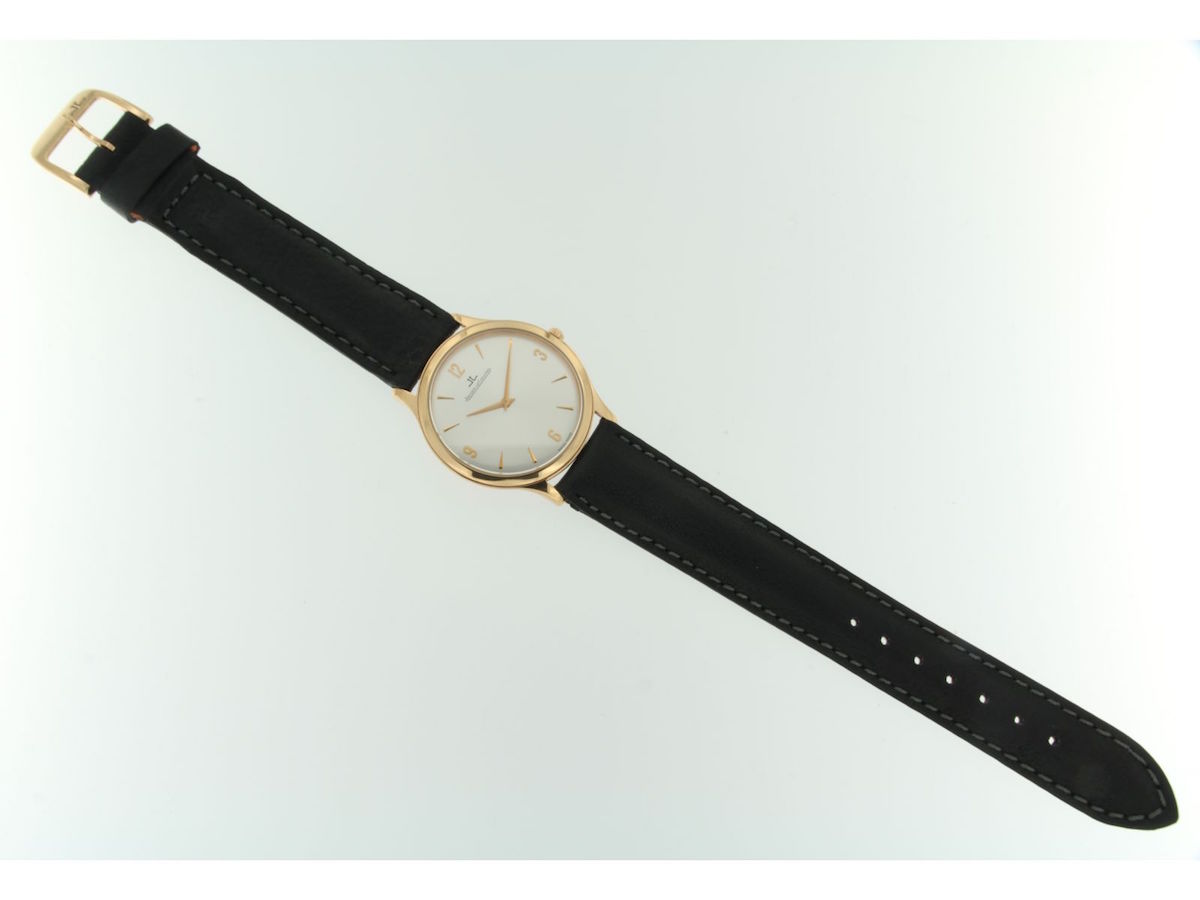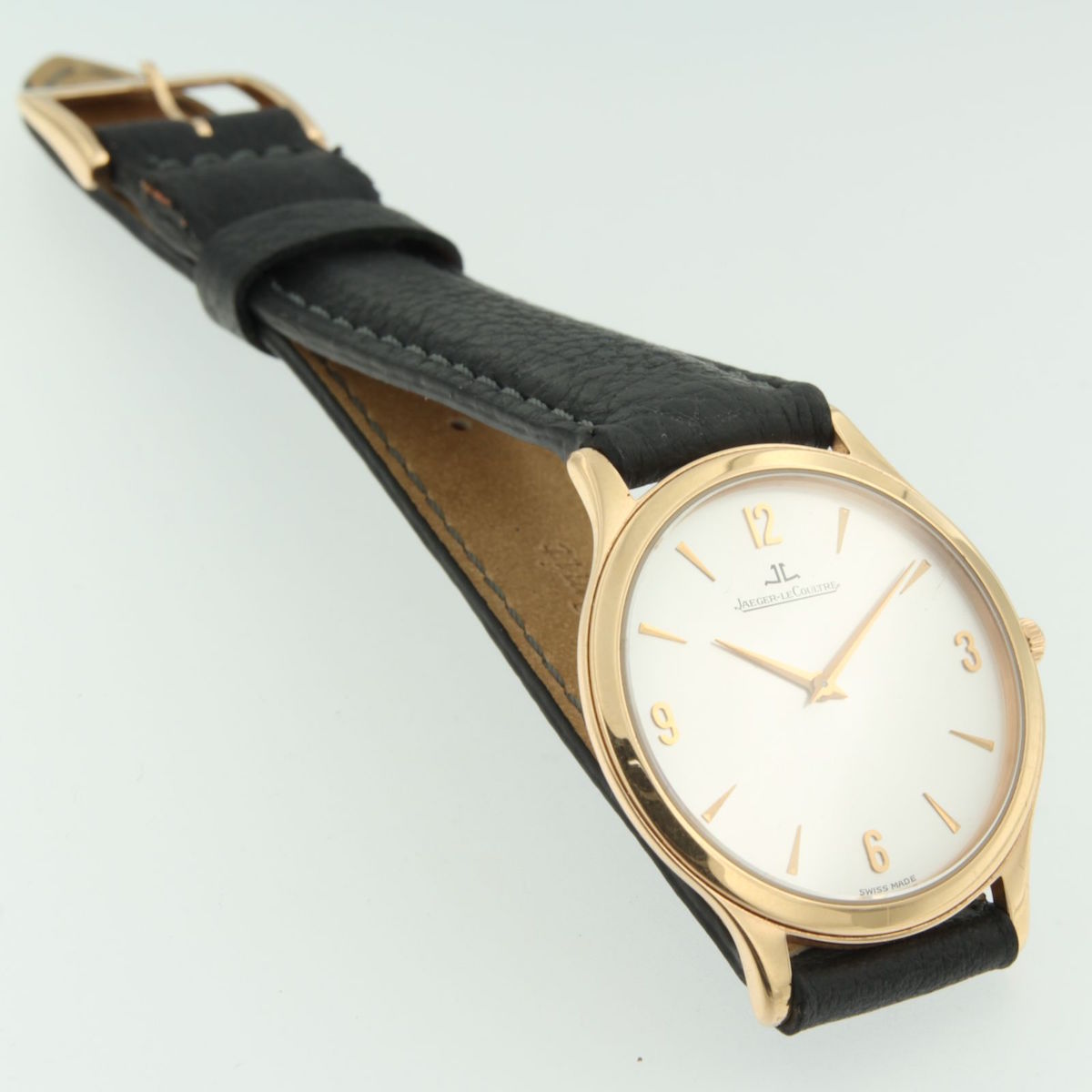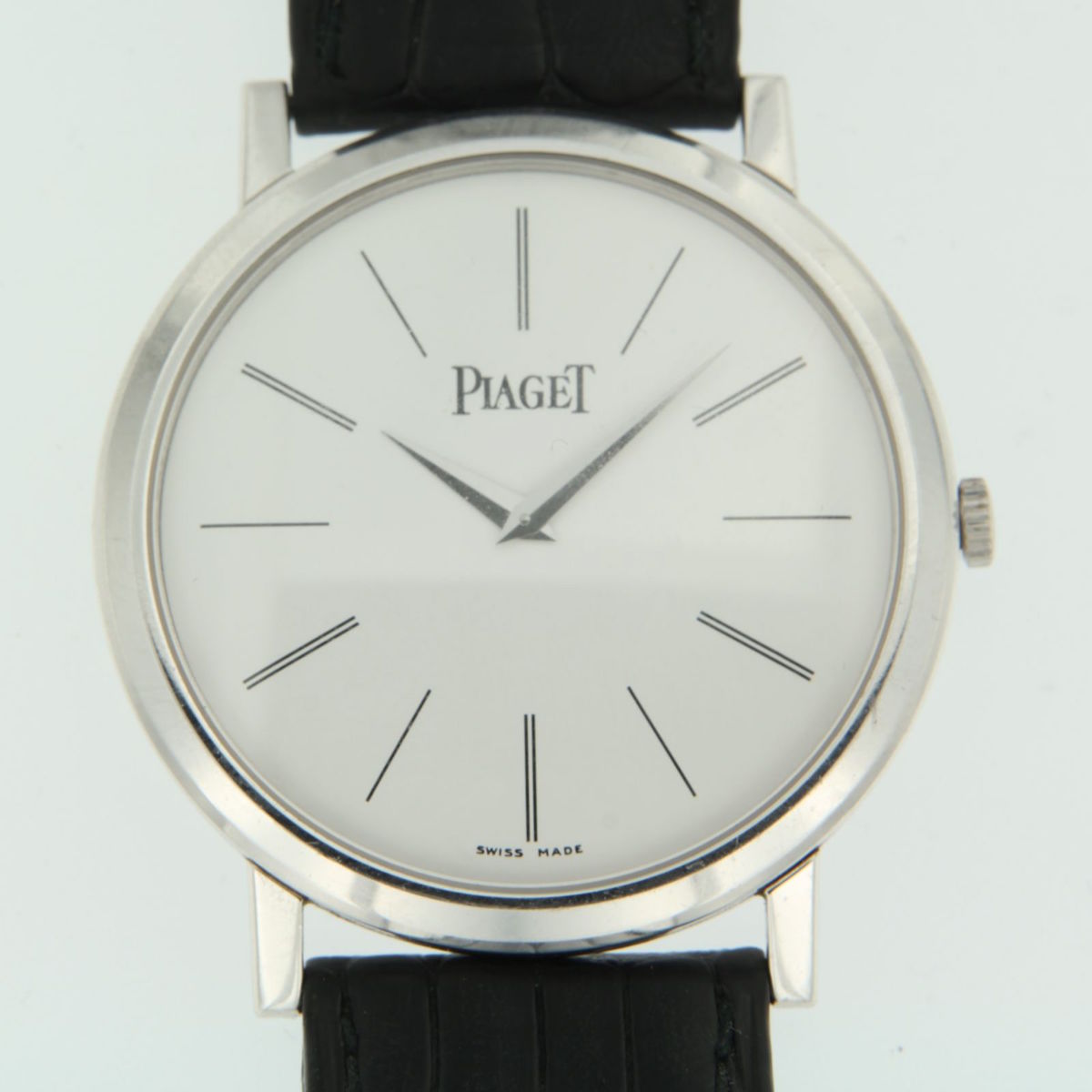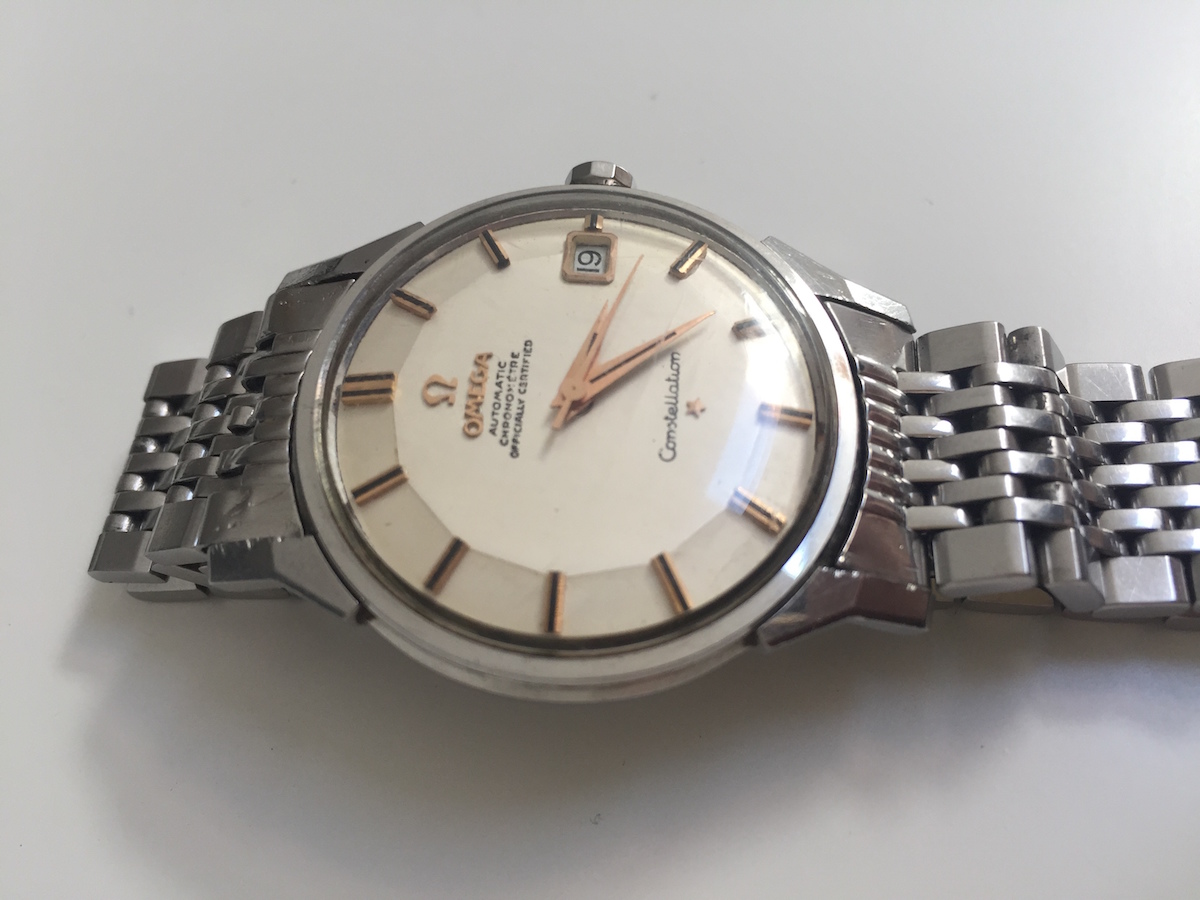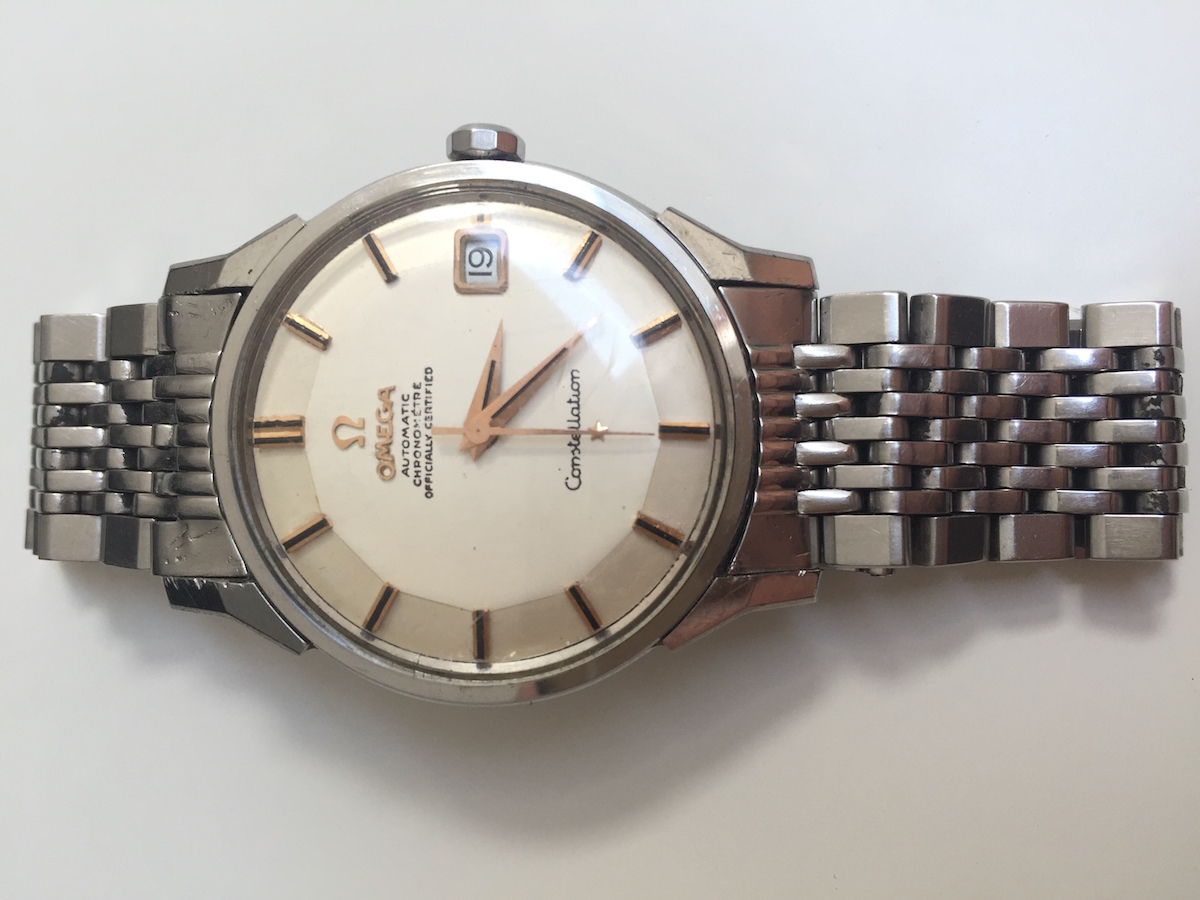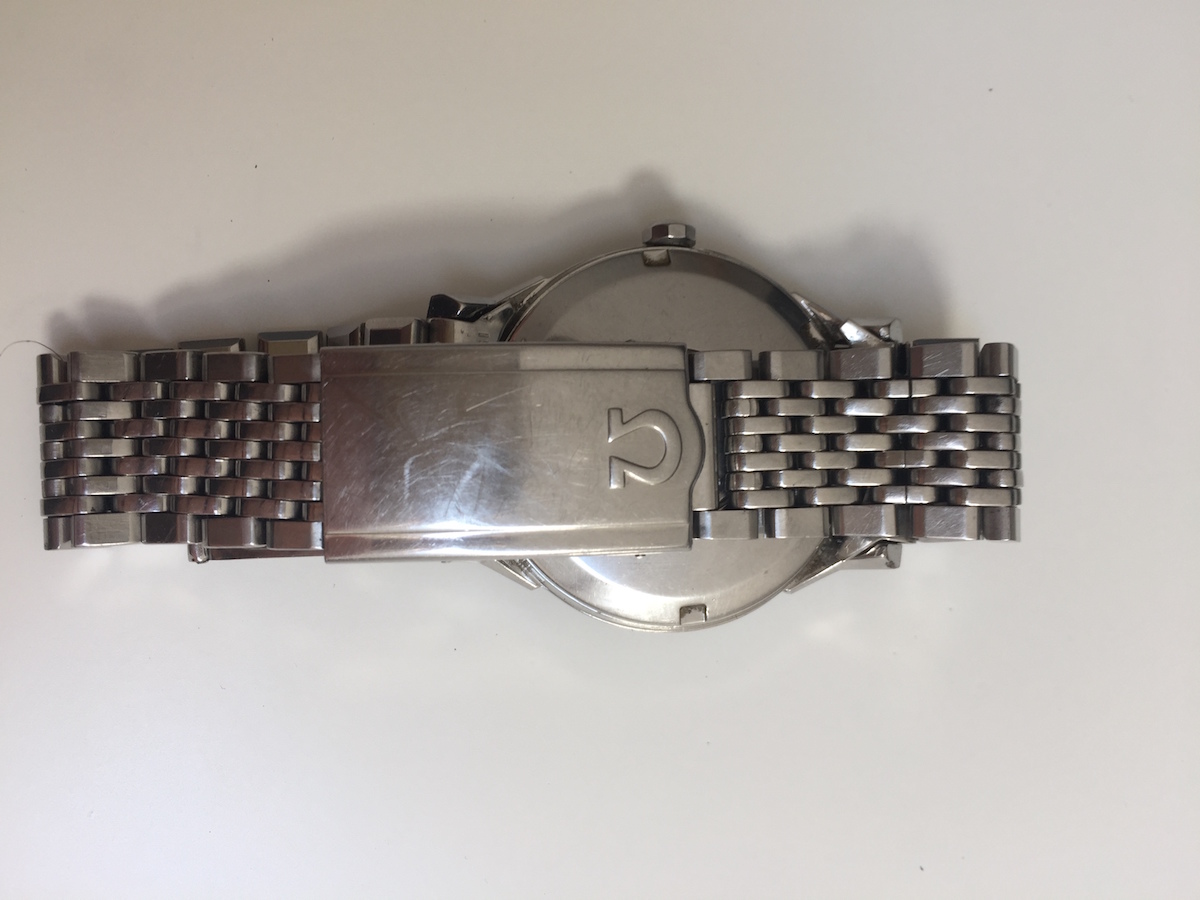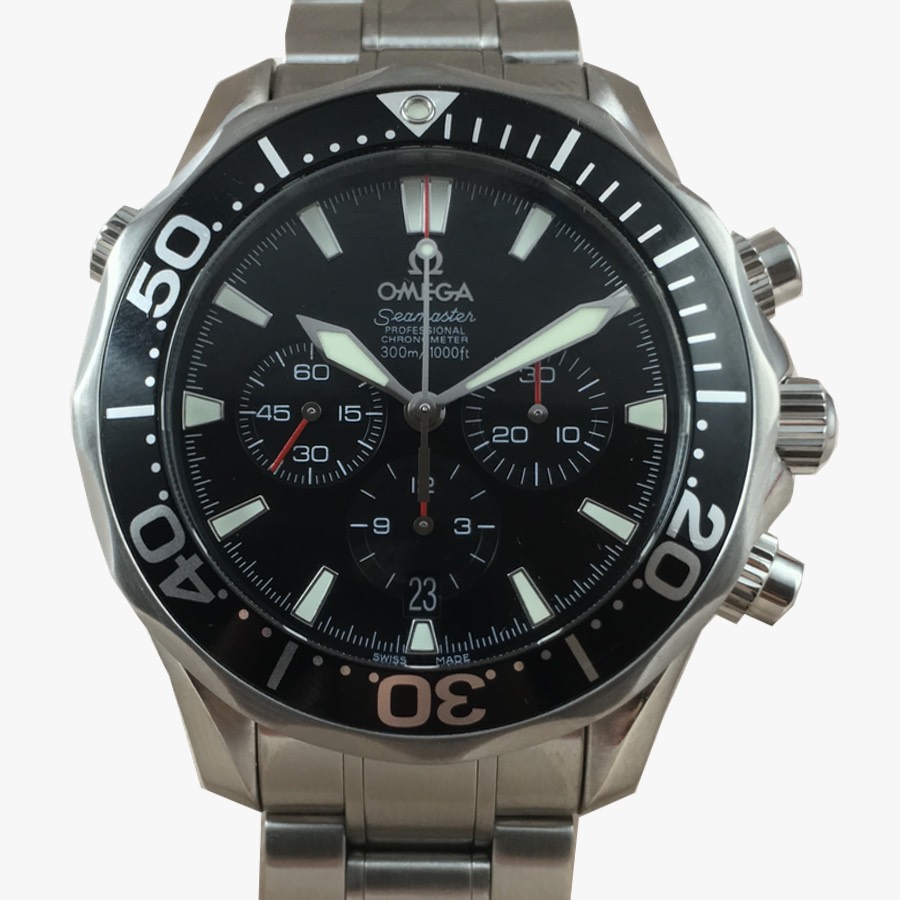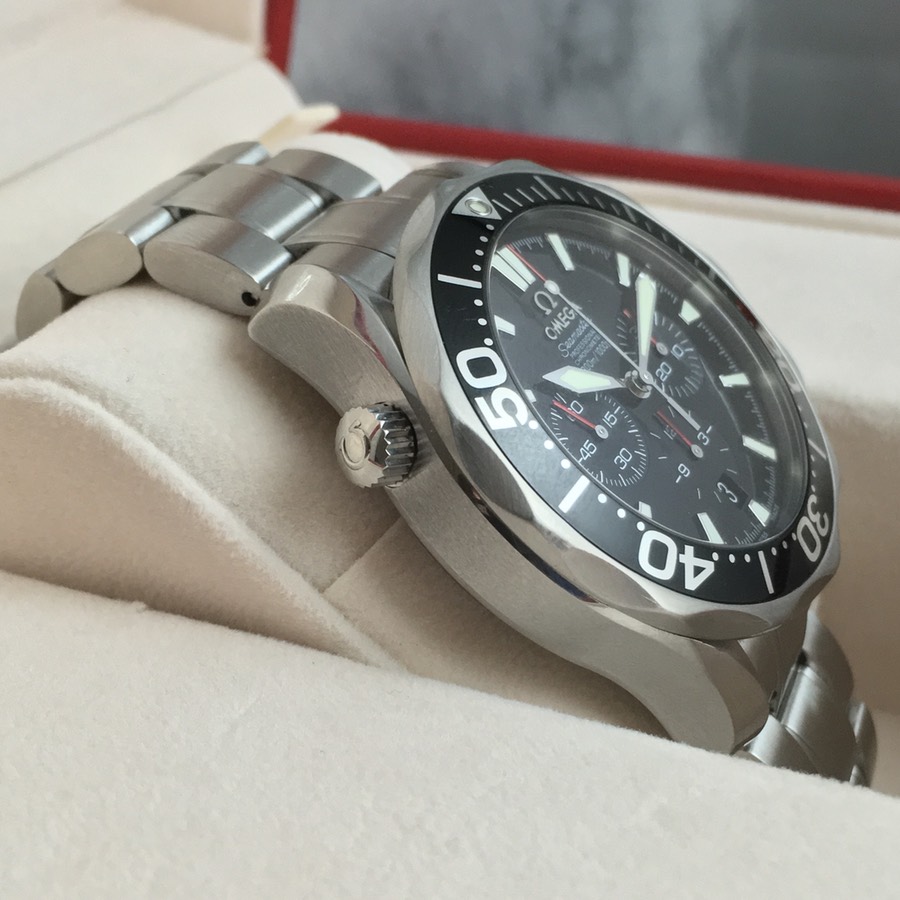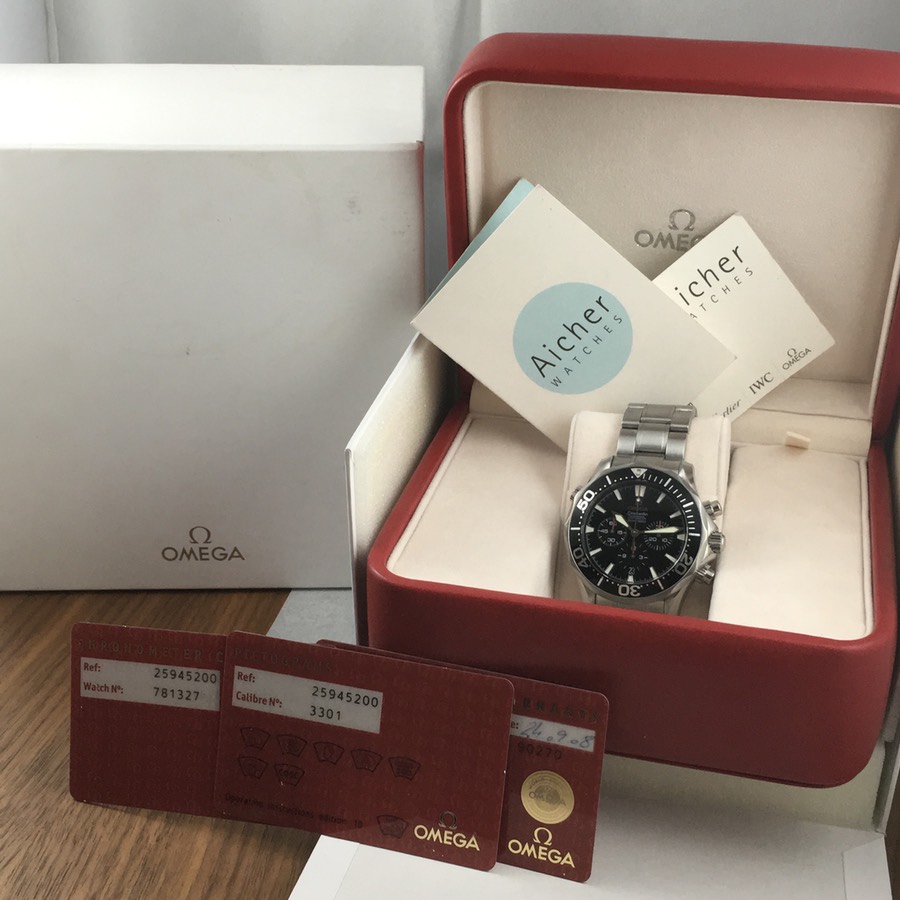5 Cool Finds – Two Ultra-Thin watches from JLC and Piaget, Two desirable Omega watches and a super-cool Compass IWC
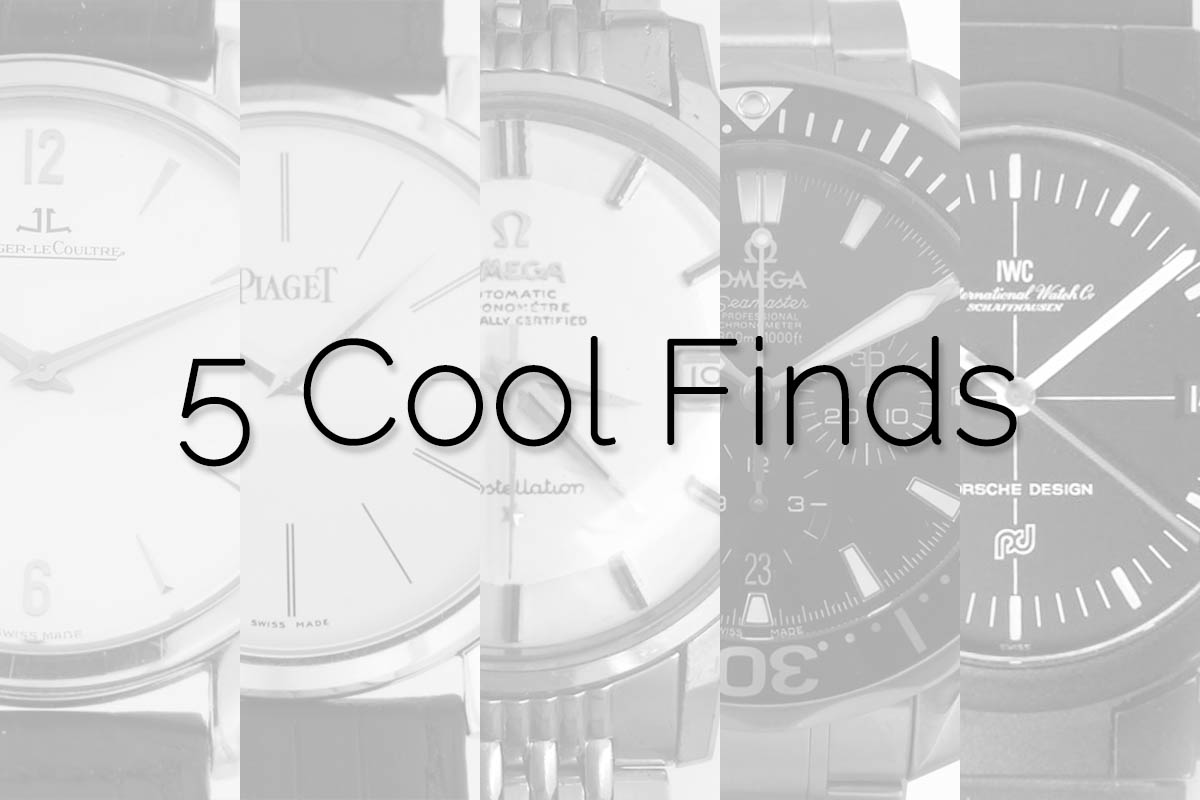
To follow up with the series we started a month ago, with our Cool Finds article, we continue this week with the fifth instalment of our market finds, in collaboration with auctioneer Catawiki. By now, you already know the story. Uber cool watches that deserve our (and your) interest. This week we have two ultra-thin dress watches from Jaeger LeCoultre and – of course – Piaget and two great Omega’s, a cool old school everyday watch par excellence and perhaps the perfect sports watch; A diver chronograph. Last but not least we also think that you might like our IWC cause it has a compass. Yes a compass!
IWC Porsche Design Compass watch Reference 3510
The IWC we are about to show you today is one of the coolest wristwatches around, but not because of some intricate complication in its movement. It is unique due to its functional design and to its double nature. Quite simply, this tool wristwatch has a compass, a useful function to always find your position in the urban jungle. Let’s see why it is so interesting and, after all, why we propose this rarely-to-get IWC Compass Watch.

In 1978 – as IWC was deep in the quartz crisis – the company chose a new way and a pioneering collaboration with Porsche Design. Ferdinand Alexander Porsche, the founder of Porsche Design, was one of the greatest industrial designers of the 20th Century. He conceived one of the legends; the Porsche 911. F.A. Porsche or Butzi (as he was most notably known), in parallel, draw a deep mark upon the watch industry. His principles, derived from the Bauhaus movement, lead him to create wristwatches that looked like instruments.
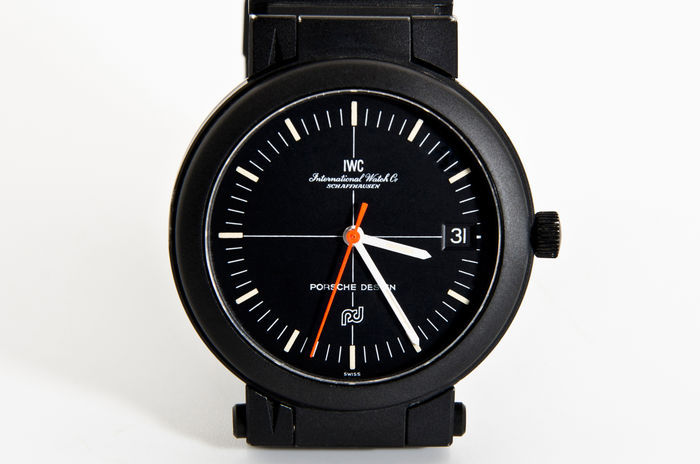
Why this watch is unique? First and foremost, this watch has a black PVD coating on top its aluminium case. Porsche chose to finish the case using an industrial process known as PVD (Physical Vapor Deposition). PVD has been found primarily in military applications, originally designed to decrease friction wear on metal parts. Coatings like these in watches was generally used to improve hardness, wear resistance and oxidation resistance. Secondly, this IWC ref. 3510 was produced in 1980, and that means that is a first generation specimen (1978-1983). The case on these is made of aluminium and measures 39mm without crown. It is technically sophisticated and has two parts. The top carries the actual watch and can be folded by means of pressure on the two-sided printing buttons at the bottom part of the case. Pushing these and lifting the top assembly, you reveal the underlying compass. The underside of the watch has the mirror, which is used for direction finding. The compass module itself can be screwed out. What is extremely impressive is that the whole case is just over 12 mm high.
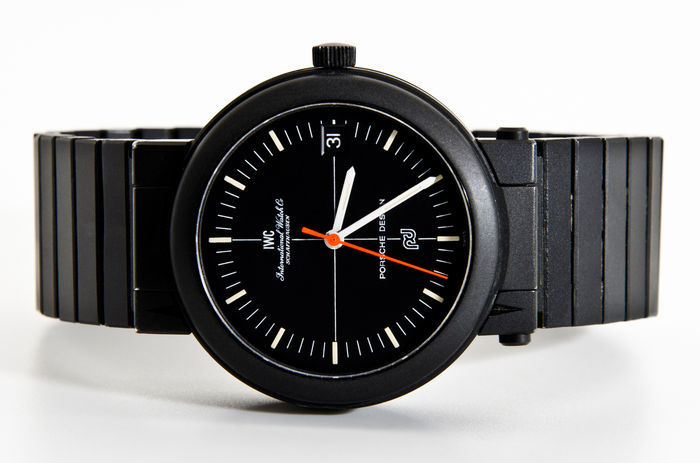
The compass watch from IWC has the calibre 37532, which is based on a workhorse ETA 2892 movement however it is extensively modified by the factory. The cool factor here is that all magnetic parts were exchanged for non-magnetic so as not to affect the operation of the compass. Innovative, way before the others. The IWC Porsche Design Compass watch Reference 3510 is an ingenious, highly functional collector’s item from IWC. Please note that it has become extremely difficult to get a compass watch of the first generation in such good condition due to the deterioration of the coating in most specimens. Overall an extremely cool timepiece we highly recommend – and that can be seen here.
Jaeger LeCoultre Ultra-Thin Master Control
What we have here is a dress watch from the great Jaeger LeCoultre, a company that is considered one of the most important Swiss manufacturers. It is an old-school, very traditional timepiece – so to say, classical elegance. It is a reference 145.2.79 with 18k gold, 36mm case. Its thickness is only 5mm so it’s an ultra-thin mechanical watch. It has concave lugs while the dial is pearl white with applied yellow gold dart indexes and Arabic numerals. Hands are yellow gold dauphine shaped.
This specific watch is a mechanical wound one having the in-house JLC calibre 849. At 1.85mm, it is simply one of the thinnest mechanical movement around. We are talking about a marvel of micro-mechanics, especially if we take under consideration that its designed to be so thin. The underlying difference to most watches of this kind offered by the competition is that this specific watch has passed exhaustive tests. As you may have noticed nowadays, most major Swiss manufacturers publicize the tests that their mechanical watches pass. JLC was one of the pioneers on that field.
Jaeger-LeCoultre’s offerings have not completed COSC tests, but please don’t be disappointed. The JLC testing protocol appears to be considerably more rigorous than the COSC protocol. As a result, Master Control timepieces meet a standard that substantially exceeds that of a Chronometer-rated movement. With JLC’s Master Control series, all models within that line undergo 1000 consecutive hours of testing (that’s almost 42 consecutive days, compared with less than half that duration in COSC testing), and this is performed in 6 positions. JLC’s testing, moreover, is carried out with the movement fitted within the case, whereas COSC tests are carried out on just the movement, without the case, which can potentially alter the accuracy once the movement is seated in the case.
On this watch, like other ‘Master Control’ timepieces from JLC, the label “1000 Hours Control” and the engraving on the back of the models confirm that they have successfully passed all tests for accuracy, resistance to temperature and barometric pressure changes, vibrations and magnetic fields as well as water resistance. A great feat that is amplified especially if we take under consideration how thin its mechanical calibre is. This watch might be visually discreet, it is an horological achievement. It is a limited edition with number 0809 and has some light scratches (but nothing that can’t be polished). A great dress watch, with superb elegance and technical content, listed here.
Piaget Altiplano
Piaget is considered the king of ultra-thin watches, holding more than a dozen records in various categories. This expertise goes all the way back to 1957, with the introduction of Calibre 9P, the first Piaget ultra-thin movement (2 mm); considered today a real classic. Then, in 1960, Piaget watchmakers developed the Calibre12P, the thinnest automatic movement in the world with a thickness of 2.3 mm (made official by an entry in the Guinness Book of Records). Finally, in 2014, Piaget presented the Altiplano 900P, at 3.65mm (around 1/8th of an inch) it was, at that time, the world’s thinnest hand-wound mechanical watch.
The Altiplano we have here (ref. P10174) continues this great tradition by Piaget. It has a manual wind 430P movement, a white dial with printed baton hour markers and faceted blade hands. Its 18kt white gold case is brushed and polished, while 6 screws secure the caseback. The watch weighs 54,8 grams and its diameter is 38mm without the crown. It is fitted with a black leather strap with white gold Piaget buckle. The watch is in very good condition, with some minor scratches.
The Altiplano is an ultra-thin luxury dress watch from a company that specializes on this segment of the market. It’s like wanting to buy a divers watch and looking first and foremost watches from Rolex and Omega. Its allure is undeniable, especially if you are looking at this kind of wristwatch. It is extremely well made, constructed from white gold and its calibre is a Swiss horological miracle. A watch is more than the sum of its parts and this Piaget perhaps is the biggest proof of that. That makes it extremely awesome, therefore eligible for this week’s cool finds. Check the auction here.
Omega Constellation – 1960
Before the Speedmaster and the Seamaster, the Omega Constellation was Omega’s flagship. This particular family of watches dates back to 1952. Its ancestor was the “Century” watch, a limited-edition self-winding chronometer wristwatch launched in 1948 to celebrate the firm’s 100th anniversary. The name and the symbol of the line chosen by Omega were striking: it was dubbed “Constellation”, and the back showed the cupola of the Geneva Observatory. Omega chose this name because it implies a perpetual movement through the cosmos, which is consistent and predictable, like the operation of a reliable mechanical watch. The symbol of the Geneva Observatory’s cupola also succinctly implies that it is a chronometer timepiece, built and tested to very high standards.
The Constellation family had two defining characteristics: elegance and performance. This collection can be divided into two periods – from 1952 until 1964 and from 1964 until 1978. In our case we have a first period watch (1960), which is defined by the combination of a sumptuous yet elegantly refined case and a pie-pan (convex-sided) dial, with distinctive dauphine hour markers. Elegance and everyday functionality were the first and foremost characteristics of the Constellation. Performance was also an extreme plus. Here we have a model equipped with the 561 calibre. It has 24 jewels, a four-arm beryllium balance and excellent anti-magnetic properties. It is also an extremely reliable movement. In our specific watch, the movement has been restored, as the rest of the watch, 15 years ago.
This constellation is a small watch by today’s standards but packs a big punch. The crystal diameter is 29mm and the watch is at 34mm. The watch bracelet provided is an original Omega and period correct reference and has some slight damage on one side (check the pictures). What makes this particular wristwatch eligible for a place in this week’s “cool finds” is its price, in relation to its potential. The estimate is from €550 to €750, and for that money you can buy a very cool vintage piece which after some cosmetic and mechanical refreshments, can literally become even cooler. After all it has what it takes both in terms of style and function. Listed here.
Omega Seamaster Professional 300m Automatic Chronograph
Summer is here and I think there is yet plenty of time to acquire a great looking diver from the legendary Seamaster line, which also has an excellent chronograph movement. Let me say that, generally speaking, this combination is quite tricky to achieve. Usually companies, in their attempt to create a diver chronograph, miss the point and loose the necessary balance that a watch of this type must possess. Omega, a master in this kind of watches, created a very beautiful example and that is the reason why this wristwatch takes its place in this week’s cool finds.
Launched in 1948 to coincide with the brand’s 100th anniversary, the OMEGA Seamaster line is the oldest in the current collection. Loosely based on the waterproof wristwatches made for the British military at the end of World War II, the Seamaster was first intended as a robust yet elegant watch for active individuals. After many historic references, like the first automatic diver chronograph (1972), this line radically was restyled and in 1993, we had the introduction of this specific Seamaster design – called by collectors the Bond Series. Almost right from the start a chronograph model was part of the collection.
In 2005, the specimen we have today was introduced to the public. The Seamaster chronograph with reference 2594.52 is a very balanced diver chronograph. The 41.5mm case is just the right size while at the same time, it is stylish with the red subdial hands contrasting beautifully with the black dial. We find a helium valve at 10, while its water resistance is 300 meters. The Seamaster chronograph is equipped with calibre 3301. It is an automatic chronograph movement based on the legendary Piguet calibre 1285. It has 52 hours power reserve, with 33 jewels and beats at 28,800vph. It is a column wheel chronograph (an arrangement which is limited to very expensive chronographs). Last but not least, it’s an officially certified chronometer.
This Seamaster chronograph comes with box and papers and complete bracelet with all links. It is in very good condition with a perfect and unblemished crystal, flawless dial and a clean bezel. It has 1-year warranty. If you are looking for the perfect summer watch, please check it out here.
To see more watch auctions, keep an eye on Catawiki. Every week a few new auctions start and mainly the “men’s luxury watches auction” comprises the most interesting lots.


